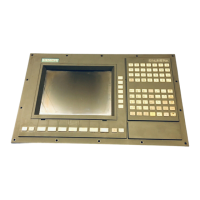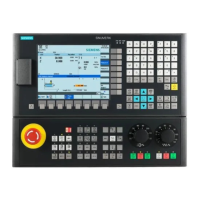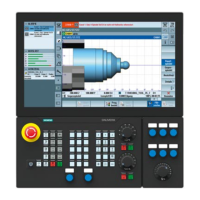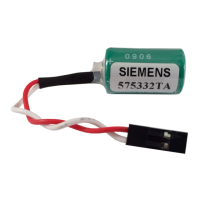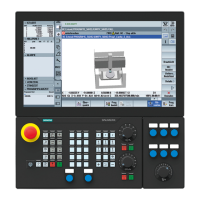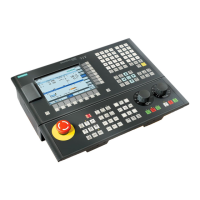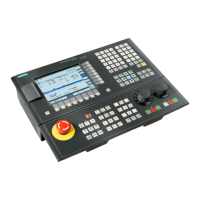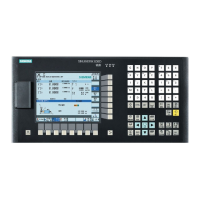Detailed Description
2.10 Working with tool environments
Basic logic functions: Tool Offset (W1)
Function Manual, 11/2006, 6FC5397-0BP10-2BA0
173
_LEN[11]
REAL
Result vector
The vector components are arranged in the following order:
Tool type (LEN[0])
Length of cutting
edge
(LEN[1])
Abscissa (LEN[2])
Ordinate (LEN[3])
Applicate (LEN[4])
Tool radius (LEN[5])
The coordinate system defined in _COMP and _STAT is used as the reference
coordinate system for the length components. If no coordinate system is defined in
_COMP, the tool lengths are represented in the machine coordinate system.
The assignment of the abscissa, ordinate and applicate to the geometry axes depends
on the active plane in the tool environment, i.e., with G17, the abscissa is parallel to X,
with G18 it is parallel to Z, etc.
Components LEN[6] to LEN[10] contain the additional parameters, which can be used
to specify the geometry description of a tool (e.g., $TC_DP7 to $TC_DP11 for the
geometry and the corresponding components for wear or sum and setup offsets).
These 5 additional elements and the tool radius are only defined for components E, G,
S, and W. Their evaluation does not depend on _STAT. The corresponding values in
LEN[5] to LEN[10] can thus only be not equal to zero if at least one of the four specified
components is involved in the tool length calculation. The remaining components do not
influence the result. The dimensions refer to the control's basic system (inch or metric).

